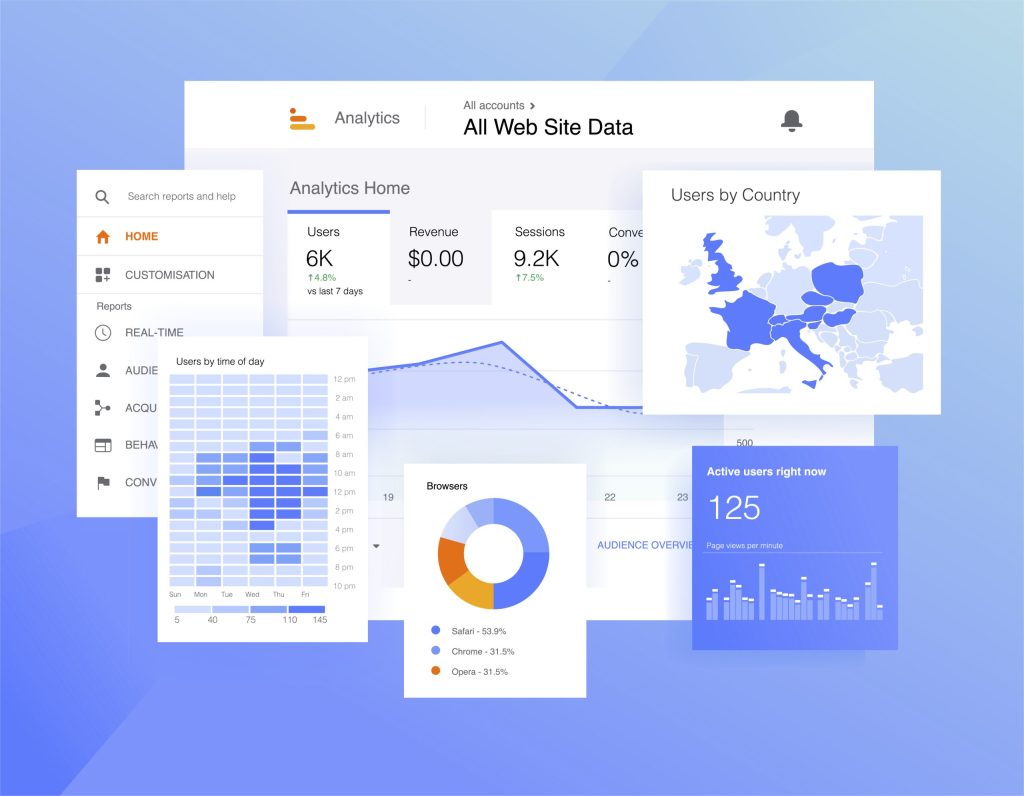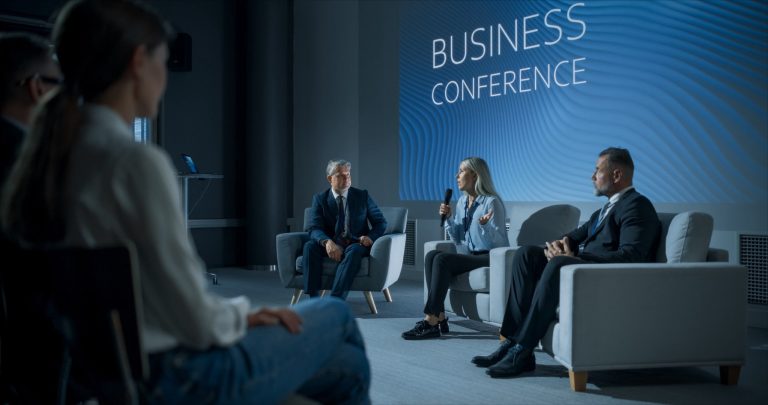
Google Just Changed the Rules: Why B2B Tech Companies Are Losing Search Visibility (And How to Win It Back)
Google’s recent algorithm update has just re written the rules for how content is ranked and discovered online. The September 2025 “Perspective” update is the search giant’s most aggressive move yet to separate companies with genuine expertise from those churning out generic content.
Google’s September 2025 “Perspective” update has fundamentally changed how the search engine evaluates content quality and expertise. And while much of the conversation has focused on consumer-facing businesses, the implications for B2B technology marketing are profound and, frankly, more complex.
Here’s what B2B tech marketers in Australia and New Zealand need to understand, and how to adapt your content strategy accordingly.
What Actually Changed in the September 2025 Update
Google’s latest algorithm update rewards three things above all else:
- Genuine Expertise backed by experience. Surface-level commentary won't cut it anymore. Google wants to see evidence that you actually know what you're talking about, whether that's through case studies, original research, testing, or practical application.
- Complete answer delivery. If your content forces someone to run three more searches to get the full picture, you're losing ground. Google now measures whether users find everything they need in one place or whether they immediately bounce back to search again.
- Original Perspective. AI-regurgitated content, recycled thought leadership, and copycat articles are dropping in rankings. Google is actively seeking fresh insights, firsthand experiences, and genuinely new information.
For B2B tech marketers, this isn’t just about writing longer articles. It’s about rethinking how we demonstrate expertise in a space where buying cycles are long, stakeholders are multiple, and decisions are complex.
Why B2B Content Faces a Different Challenge
While consumer content might help someone decide which laptop to buy for their home office, B2B tech content may need to help a buying committee evaluate enterprise software that will impact hundreds of employees, integrate with legacy systems, and represent a six or seven-figure investment.
The challenges are distinct:
B2B Buying Journey
The B2B buying journey doesn’t complete in one session. A single piece of content rarely closes the loop. Your prospect might read your article today, share it with their IT Director next week, present it to the CFO a month later, and circle back to you in three months. Google’s “user journey completion” metric doesn’t quite capture this reality, which means B2B marketers need to think in content ecosystems, not individual articles.
Multiple Stakeholders
Multiple stakeholders mean multiple search intents. The technical evaluator googling “API integration best practices” has different needs than the procurement manager searching “ROI of marketing automation platforms.” Your content strategy needs to address the full buying committee, not just one persona.
Thought Leadership
Thought leadership isn’t a product spec sheet. The update rewards “perspective,” but in B2B tech, that means demonstrating market understanding, trend analysis, and strategic thinking. It’s not enough to describe what your solution does. You need to explain why the market is moving in a certain direction, what that means for Australian enterprises, and how your expertise positions you to guide clients through that change.
The Channel Marketing Consideration
Here’s a challenge specific to B2B tech: if you’re a vendor working with channel partners, or a partner reselling vendor solutions, you’re facing the possibility of content duplication.
Google’s “fresh perspective” requirement creates tension when 15 different resellers are all publishing similar content about the same vendor’s products. The partners with original perspectives, local case studies, and genuine expertise in specific verticals or regions will win.
For vendors, this means empowering partners with unique data, local market insights, and co-branded case studies. For partners, it means investing in content that showcases your specific implementation expertise, not just the vendor’s product features.
Technical SEO Still Matters (Maybe More Than Ever)
Great content needs a strong technical foundation. The update reinforced several technical factors that B2B sites often overlook:
Content clustering is non-negotiable. Your pillar pages need to connect to supporting content in a logical structure. “Marketing Automation Guide for ANZ B2B Tech Companies” should link to “Email Campaign Best Practices,” “Lead Scoring Frameworks,” “CRM Integration Strategies,” and “Reporting and Attribution.” Google rewards this type of structure.
Mobile experience can’t be an afterthought. Even though B2B buying happens primarily on desktop, Google evaluates mobile experience as a ranking factor. If your technical documentation, case studies, or product pages perform poorly on mobile, your rankings suffer across all devices.
Schema markup demonstrates expertise. Beyond basic Article and FAQ schema, implement Author schema to highlight your experts, Review schema for case studies, and How-To schema for implementation guides. This structured data helps Google understand the depth and type of expertise you’re offering.

The LinkedIn Factor: Why Search-Only Strategies Are Failing
Here’s what most SEO-focused articles won’t tell you: the best B2B content often reaches prospects through LinkedIn and industry communities first, with Google searches happening later in the journey as validation.
This update actually reinforces the need for multi-channel content distribution:
Build your brand outside Google’s walls. If your content strategy relies entirely on search traffic, you’re increasingly vulnerable. LinkedIn posts, eDM strategies across mutiple user types, webinar content, podcast appearances, and community contributions build the kind of brand authority that Google recognises and rewards.
Social proof influences search rankings. When your content generates genuine engagement, shares, and discussions on LinkedIn and industry platforms, Google notices. The algorithm can’t directly measure LinkedIn engagement, but it can measure branded searches, direct traffic, and return visits—all of which increase when you’re building real authority in your space.
The AI Search Question Nobody's Answering
Here’s the elephant in the room: while Google is updating its algorithm to reward expertise and perspective, many B2B buyers are increasingly starting their research with ChatGPT, Claude, or other AI tools rather than Google search.
This doesn’t make SEO irrelevant. It makes it more important, but in a different way than we have ever known before. AI tools are trained on the content they can find and access. If your expertise isn’t discoverable and well-structured online, you’re invisible to both Google and AI search tools.
The winners in this new landscape will be the companies creating genuinely valuable, expert-driven content that serves both traditional search and AI discovery.
Moving Forward: What B2B Tech Marketers Should Do Now
The September 2025 Perspective update isn’t a temporary algorithm fluctuation. It’s a signal of where search is heading: more intent-driven, more expertise-focused, less tolerant of shallow content.
For B2B tech marketers in Australia and New Zealand, the path forward is clear:
Demonstrate genuine expertise through case studies, original research, honest assessments of challenges, and specific insights from your work with clients.
Build comprehensive content ecosystems that serve the entire buying journey and all stakeholders, not just individual search queries.
Establish thought leadership that demonstrates market understanding, not just product knowledge.
Create fresh perspectives specific to the Australian and New Zealand market, your vertical expertise, or your implementation experience.
Invest in technical foundations that support great content with proper structure, schema, and performance.
Diversify your channels so you’re not dependent on Google alone to reach your target accounts.
The companies thriving post-update aren’t chasing algorithm changes. They’re simply creating genuinely valuable content that demonstrates real expertise. That’s always been the goal. Google’s just finally getting better at recognising it.
Let's Talk About Your SEO Strategy
RAW Marketing Insights
Section Title
Fortitude Valley, Qld 4006 MAP





